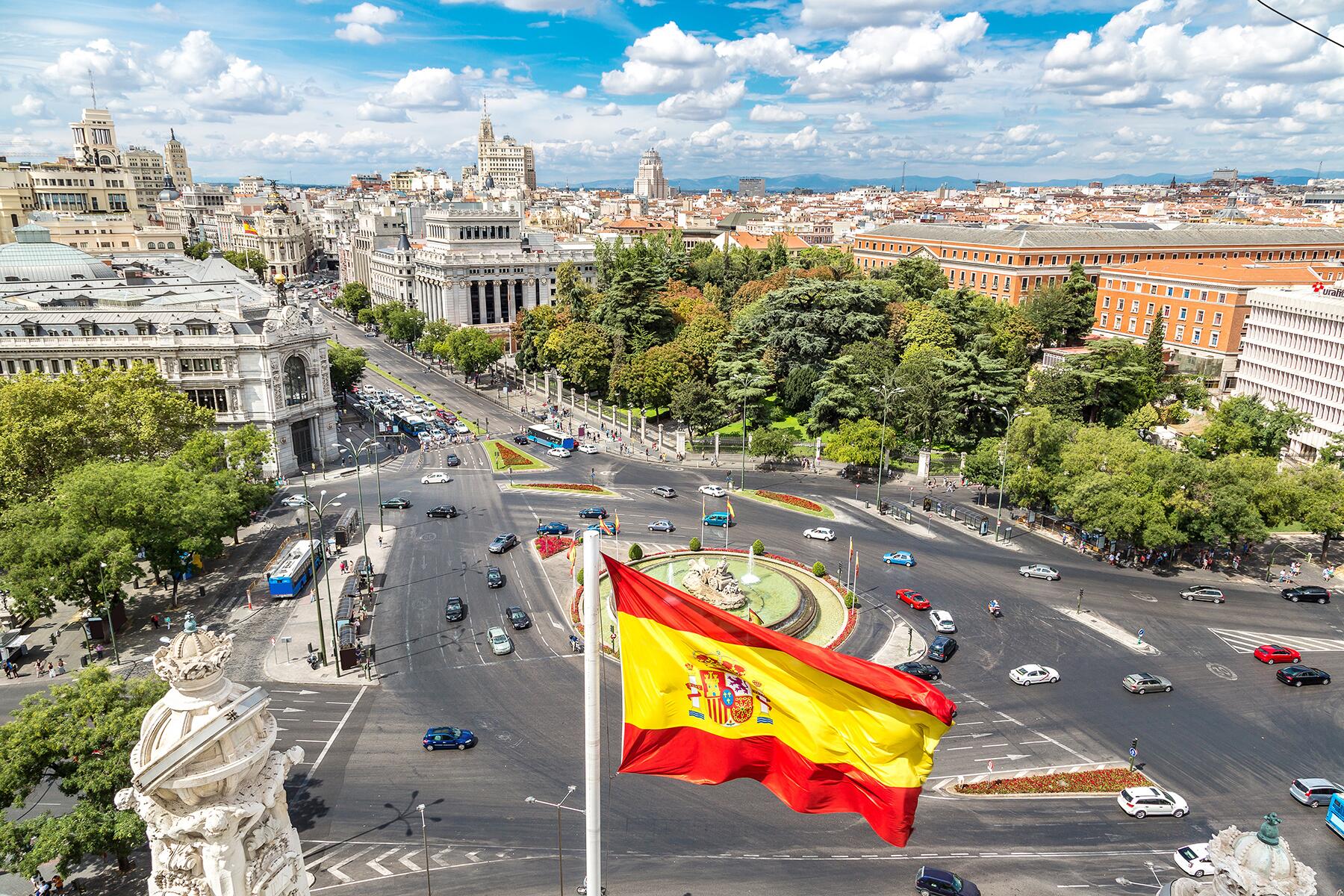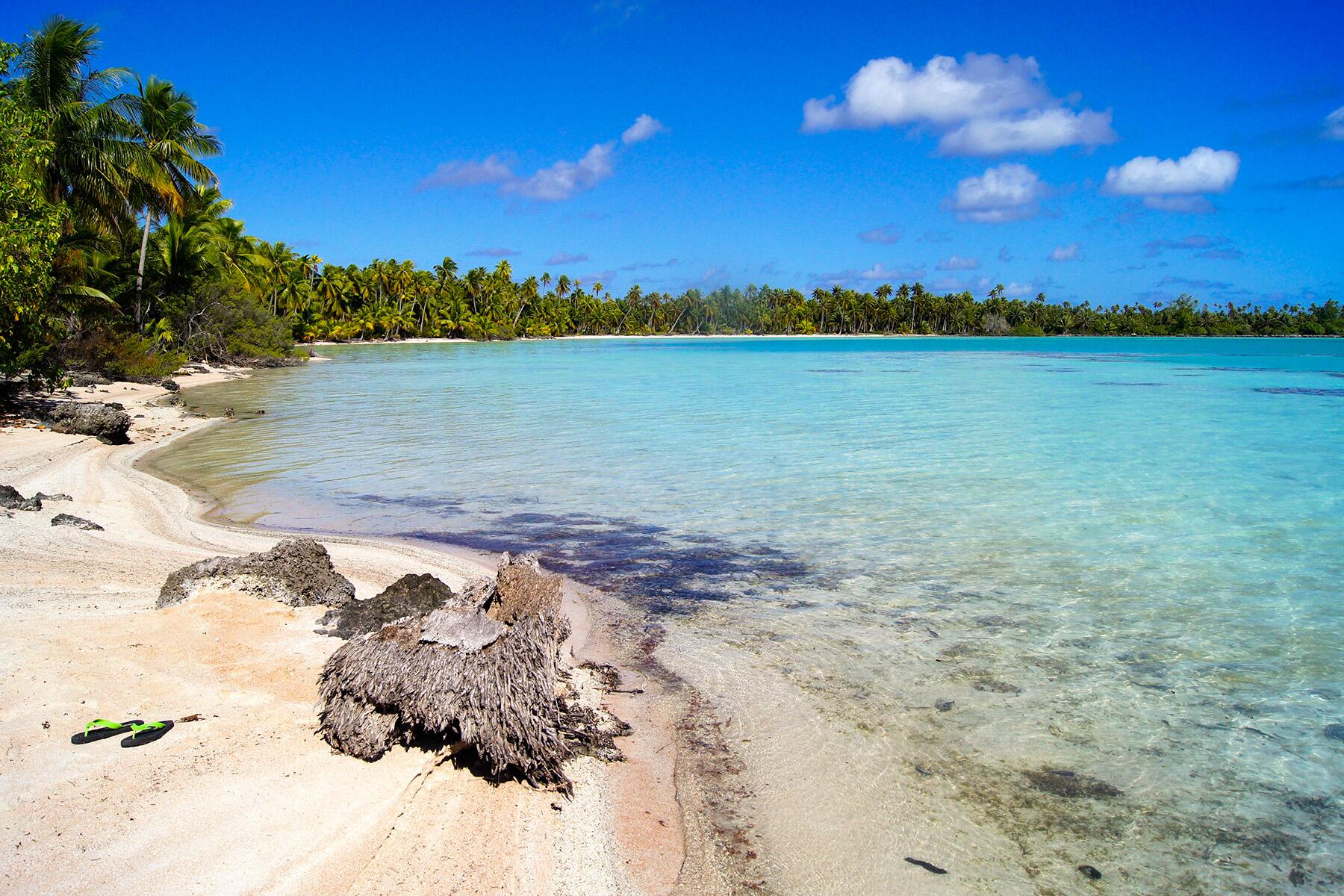They really roll out the hospitality on these tiny islands.
A few years ago, I was traveling to the island of Rangiroa, in the Tuamotu island group of French Polynesia. I didn’t realize it until I was boarding my Air Tahiti flight at Faa’a International Airport on Tahiti, but we were scheduled to make a brief stop on the island of Mataiva, just west of Rangiroa.
When we landed after the hour-long flight from Tahiti, the airport initially looked to me like most I’d seen in French Polynesia. But when the passengers boarded, I noticed the difference—they were all wearing gigantic flower lei made from fragrant, bright white tiaré blossoms. Many of the women had flower crowns, while many of the men had brimmed hats woven from fresh palm fronds. The local Air Tahiti staff had also made a set for the pilots and flight attendants operating the flight.
Wow, I thought to myself. They really roll out the hospitality on these tiny islands. Soon the cabin of our ATR 72 prop jet filled with fragrant blossoms, but Mataiva had one more spectacle for us upon departure. I hadn’t gotten a good look at the lagoon on approach, but as soon as the plane popped above the canopy of coconut palms, the lagoon came into focus, and it was unlike any I’d ever seen before.
Most atolls are palm-bedecked rings of coral surrounding a deep blue lagoon, but Mataiva’s lagoon is segmented, like a haphazard orange slice, with small deep pools in the lagoon separated by shallow walls. It almost looks like leopard print from above.
Recommended Fodor’s Video
I told myself I’d have to return for a visit, and that’s exactly what I did.
Mataiva (pronounced either Mata-ee-vah or Ma-Tai-evah, I heard both during my journey) means “nine eyes” in the Paumotu dialect of Tahitian, and is in reference to the shape of the lagoon. It turned out to be a challenge to book. The Air Tahiti flights operate from Papeete only on Sundays and Thursdays, and there are only two guest accommodations on the island, which has a population of around 300. They’re both pensions, or Tahitian guesthouses, which are supremely affordable compared to the international resorts on Tahiti or Bora Bora, but they’re also not bookable on a website.

The best way for U.S. travelers to book is through a Tahiti travel specialist – those are travel agents who are certified by Tahiti Tourisme as experts in booking the islands. Booking pensions often requires payment via a bank transfer or local check, and that’s something most Tahiti specialists can arrange via a local agency in Papeete. For those who do wish to book direct, they can e-mail the pensions directly.
I was booked at Mataiva Village, a collection of cabana-style accommodations situated in the village, right on the pass between the lagoon and the open ocean. After a welcome at the airport, where each of the ten arriving guests was adorned with a single strand of tiaré blossoms in welcome, we were directed to board a le truck—a popular mode of conveyance in French Polynesia. A le truck is a pickup truck with benches installed on either side of the bed, covered by a canopy to protect riders from the elements.
With me were a group of seven French divers from Papeete, and a French mother-and-son pair, also from Papeete. A few of them, I discovered later in the week, had a passable level of English, but few of them were willing to use it. Upon arrival at Mataiva Village, I was greeted by Teura, a 20-something Tahitian woman in shorts and a sports jersey who manages the property. She issued instructions to the arrivals on bungalow assignments and meal times (meals and excursions are included in the 11,000 franc per person nightly rate of the pension—that’s just over $100 USD at press time), and then checked with me in English if I had understood her French.
I have a passing level of conversational French, but for business matters, I like to confirm in English. She repeated some of the information for me. Breakfast was at 7:30 each morning, dinner at 6:30 in the evening, and lunches were provided on the daily excursions. She asked if I had any dietary restrictions or allergies and if eating lots of fish would be ok for me. There’s a supply of chicken, she explained, for guests who aren’t wild about fish, and they can accommodate most dietary needs with some advance notice.
“But the excursion guide can only narrate in French. Only me and my boyfriend speak English.” she said apologetically. “It’s ok for you?”
I said it was, but she was quick to offer alternatives. “If there’s anything the guide doesn’t say or that you don’t understand, just ask me after, and I will tell you about the legends.”
Deal. I also quickly met the boyfriend, Ivann, a Tahitian man about Teura’s age who I later found seems to have a permanent smile. He kept popping up throughout my stay—not only did he work at the local store, he was also a baggage handler for Air Tahiti.
Like most of French Polynesia, the place had a timeworn feel. The main building had a small sitting room and library and long rows of tables for meals. There was a communal refrigerator in one corner for guests to keep their beverages cold and a water fountain with cold and hot filtered water. Coffee, tea, and hot chocolate were kept out for guests to avail themselves throughout the day and evening.
A large shaded terrace fronted the lagoon pass, with picnic tables, benches, and plastic Adirondack chairs. The whitewashed French-style balustrades had seen better days—several of them were missing or broken, but the gaps made excellent access points for the trio of resident dogs that like to come around seeking pets when there are guests about.

On the property, there were bicycles available for loan on request and kayaks that guests could take into the lagoon.
I was directed to my terraced bungalow—the first one next to the main building, with a nice view of the water. The main entry door was a sliding glass door that is secured with a padlock. There were both a double and single bed inside, on a tiled floor with a small air conditioning unit above. There are also some cupboards and various tables. The tiled bathroom is tidy and stocked with Tiki Tahiti brand soap and shampoo.
Teura mentioned there was a store just a few feet up the road, so I braved a tropical rainshower to go check it out. It sat underneath a large plumeria tree and is a dimly lit metal warehouse (electricity is expensive here, so the store mostly relied on natural light from large windows) that sells general goods ranging from propane to children’s toys.
A single drinks cooler offered up cans of Sprite or Coke, local fruit juice, or local cola. There was a shelf of staples behind me – canned beef or chicken labeled “Fenua” (meaning it was sourced in French Polynesia), dry pasta, flour, crackers, shelf-stable cheese, and a limited selection of other necessities. There was a box of habit-forming fresh croissants by the register, a steal at just 200 francs (a little less than $2).
That evening I also met Poe (“Po-ay”, short for “Poerava”- Tahitian for “Pearl”), the dining room assistant, who apologized that she spoke no English, but we connected in French. She turned out to be omnipresent, taking care of meals and cleaning during our stay.
It felt like camp, and the days quickly became routine: Wake, pour some instant coffee with sugar and creamer in the main building, and sit out on the terrace sipping it, listening to Poe shout good-naturedly at her toddler son, who has the run of the place in the mornings. Everyone entered a room with a sing-songy “Coo-coo” so they don’t startle anybody who doesn’t notice.
Breakfasts were crusty French bread with butter and marmalade, orange segments, sliced cheese, and eggs, scrambled, omelet, deviled, or sunny side up, sometimes with bacon, served buffet style on plastic-covered tables. There were also pitchers of orange drink from powder on the tables.
On the first day, we met our guide Ariimaono, a round Tahitian man, and crossed the lagoon by boat to snorkel and relax on a secluded shore. Then we visited the pito, or umbilicus, of the atoll, which is a small shoal of black rock in the middle of the atoll. We got out of the boat for a picture standing on the shoal, as he explained you have not truly been welcomed to Mataiva until you have stood on the pito. He then showed us a sanctuary for nesting seabirds on a small island in the middle of the atoll.
The next two days, the divers were diving separately, so it was just me and the other couple with Ariimaono, and we did our touring in le truck—one day to a rock grotto on the other side of the island where the lagoon lazily exits toward the ocean, followed by a visit to the piscine, or swimming pool, a portion of the lagoon that is surrounded by trees like a pool. He picked up a rock from the ground near the pool and showed us that it was phosphate. There are significant phosphate reserves at the bottom of the lagoons of Mataiva, but the islanders have blocked significant exploitation of the resource in order to maintain their environment.
On the final full day, we ventured to the opposite shore of the atoll to visit Turtle Rock, or ‘Ofa’i Taunoa, and the King Tu Marae at Papiro (noted for its rock throne), where there was another lovely beach or swimming and snorkeling.

Each day, Ariimaono was not only our tour guide but also our chef, building a wood fire under picnic shelters at each location, grilling whole lagoon fish, which we ate alongside poisson cru, a Tahitian raw fish salad of sliced red tuna tossed with carrots and cucumbers or cabbage, coconut milk, and lime juice. There was coconut bread or coconut milk rice to go along with our meal, plus water in plastic cups from a large drink cooler. We ate with our fingers off broad green kahaia leaves, and depending on the dynamics of the location, we either threw our fish bones and leaves into the fire, onto a midden, or directly into the sea to be swarmed upon by fish.
Dinners consisted of grilled lagoon fish, fish or chicken beignets, quiche, and salads, but on the last night, we had a feast: escargot, roast chicken, roast beef, and fresh grilled langoustine from the lagoon with coconut cake for dessert, and a group of local musicians came to play during dinner, strumming energetically until the last guest retired for the evening.
That alone would have been a memorable farewell to this enchanting atoll, but the real payoff was the next morning. As is traditional for Mataiva, it was my turn to board the Air Tahiti flight with a large white tiaré lei and a hat of fresh palm fronds.




